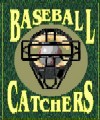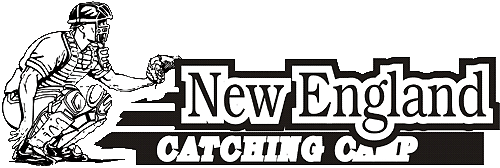 |
|
 |
|
Accuracy is the easiest to evaluate and most observable component, irrespective of the other two parts. Rating a catcher on this portion is just a matter of noting whether or not the ball arrives at the 9"x18" target some 127 feet away. Practice usually results in improvement unless the throwing mechanics are completely wrong. A simple observation of the act of throwing will tell you if the catcher is doing it right or wrong. In-Flight Velocity. Once I get the players arm warmed up to game readiness, I have him make 6 throws from a crow hop. He can use whatever mechanics he likes to generate the maximum velocity he can. I time that on the Jugs gun. I get 6 readings; I throw out the fastest, and the slowest, and average the other 4. This gives me an average max velocity. I then have him get into his crouch. I throw him pitches down the middle and have him throw down full speed. I again have him do this 6 times and use the same method to determine his average maximum throw down velocity. After timing over 500 catchers this way I have found that a drop in velocity of less then 3% from max velocity to throw down velocity is the goal. More of a drop then that and there is something in that player's mechanics of his throw to second base that is excessively “eating” velocity. At that point a close evaluation of those mechanics is needed. Ball Control & Release Efficiency. To evaluate this component I use the following technique. I position the player in front of the black Jugs tarp that hangs behind home plate in our batting cage. I measure out 10 feet and draw a line. It must always be 10 feet. The player puts his toes on the line facing the black screen. The coach kneels in front of the catcher, slightly off center. The player gets into his secondary receiving position. The coach throws the “pitch”. Player completes a full speed throw into the screen. The stop watch is started when the ball hits glove and stopped when the ball hits the screen. Because the catcher is releasing the ball about 5 feet in front of the screen, arm strength has little to do with the time recorded on the stop watch. The drill gives an accurate measurement of how fast the athlete gets it in the air. You can also have the catcher throw directly into the fence backstop, but I find the tarp makes a more precise sound when hit, making it easier to ensure a good clocking. While some critics of the evaluation process mention that it does not incorporate all the variables of a game situation, it does give a good base for comparison between any groups of players. Using these measurement techniques allows me to break the throw down into its 3 different phases and better be able to attack the area of greatest weakness in any given player. I have a number of college players that have guns for arms, velocities out of crouch 85MPH+ but have slower releases then a number of high school kids. The above evaluation technique has enabled me to isolate what section of their throw is the weakest and look for the flaws that are eating time. Likewise I have some players that have lightning fast releases but 65MPH velocity. Again it helps me direct their training efforts in the area of greatest weakness. |
 Dave Weaver, [ catchingcamp@yahoo.com ]
Dave Weaver, [ catchingcamp@yahoo.com ]
